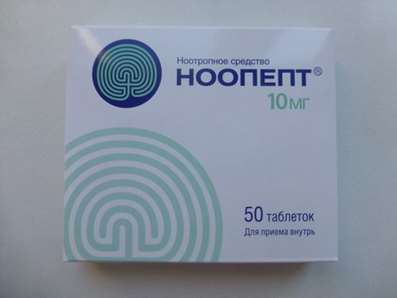Psychology of Suicidal Behavior
02 Feb 2017
Biologist Dr. Doping tells about biopsychosocial phenomenon of suicide, and anomie syndrome Young Werther.
The problem of suicide was always interesting to mankind. Once a person has realized that he is alive, he lives, and he realized that he might die, die at a certain point in his evolution man began to understand that there are times when he can get away from the life of their own. The phenomenon of suicide (the word means 'suicide') attracted the attention of mankind, probably for centuries. To date suicidology - the science that studies the phenomenon of suicide - is an interdisciplinary science that uses methods, theory, technology is very different sciences - paradoxically, not only because of psychiatry, psychotherapy and psychology, but also a large amount of data from the culture, art: a lot of writers, artists dedicated their works to this topic. But if we are talking about a scientific subject, the relevance of studying suicide undeniable.
Annually in the world commit suicide about one million people. And, according to various sources, the statistics are very difficult - not all of it entirely published, more than twenty million make a suicide attempt. Suicide ranks first among the causes of violent death, and suicide is twice more than the killings. The question arises: who commits suicide? Everyday view says that only a madman can do it. But it is very difficult from a scientific point of view. Mentally ill people are only in 20% of cases commit suicide; 65% - it is patients who have been diagnosed after examination of borderline mental disorder: neurotic state, depression, some anomalies of character. And 15% of the note - it's mentally healthy people, the so-called conventional norm.
Suicide - a topic that can be viewed in different ways. To begin with, it is a process. Independent departure from life - a process which is usually divided into two phases: pre-suicide and actual suicide. The first phase - a training phase in which we can see a man who soon will make such attempts, some factors that predispose him to commit this act. A suicidal phase incorporates the entire repertoire of the so-called suicidal activity, which includes thoughts and plan actions that will contribute to the maintenance of life, and these same actions. When we speak of explaining what a suicide, what a group of phenomena, which is connected with the decision to leave this life, we are faced with a variety of concepts. I will not repeat these concepts in a historical context. Let me just say only that at the moment almost all the scientists recognize that suicide - a biopsychosocial phenomenon, that is, there are biological factors, psychological and social.
To improve brain function use Semax, Phenylpiracetam, Cogitum and Picamilon.
Let's start with biological factors. They began to be studied relatively recently and are of considerable interest, because it has always been, particularly in the domestic psychiatry, suicide - a socio-psychological maladjustment in the conditions experienced by the classical definition of the conflict, which gives Ambrumova professor, founder of the national suicidology. This is absolutely correct definition, which speaks about the fact of the phenomenology, that is suicide. But it is not enough of said nature. Nevertheless, it consistently, and now, even on the basis of this definition, looking for biological predisposition of suicide. What can we say about it? Firstly, genetic factors. Indeed, there are genetic data, that the family first-degree relatives of a suicide 4 times more likely to commit suicide, that is most prone to this type of behavior. Twin studies: monozygotic twins is 20 times more likely to commit suicide, if one of the twins did, then the second, according to statistics, the risk increases 20 times. Di-zygotic twins, according to various estimates, up to 4% increased risk of suicidal behavior.
Biochemical factors found in patients who have attempted suicide, but survived. In the study of their biochemical finding increasing serotonin reuptake, especially in the frontal lobes of the brain. Interestingly, when neuropsychologist conducts neuropsychological testing of patients who committed suicide, he finds a certain deficit in the functions of the frontal lobes of the brain, that is the mentality of a suicide works a little differently. There suicide typology in its most general form. For example, patients who commit impulsive suicide - when faced with some major stress thrown out the window, or scratch themselves, scratching his hands very impulsively. It turns out that they have a deficit on neuropsychological tests, and it coincides with the data of functional MRI - deficit areas of the orbital frontal lobes of the brain. But in patients who are planning a long suicide deficit is the dorsolateral prefrontal cortex functions. What does this mean? The fact that the people as a result of their having the dorsolateral prefrontal cortex deficit can not find different solutions to their problems because of the damage to areas of the brain associated with the formation of rigidity. People get stuck in its negative state and can not find a solution. In contrast, healthy people who have these areas of the brain to keep, can find solutions.
Social factors that determine the nature of suicide, have been studied for a long time. The pioneer in this matter was the sociologist Emile Durkheim - one of the founders of the science of sociology. He connected with the public suicide. When it has certain characteristics, when the society is very contradictory, when there is some sensible rules, there is such a thing as anomie, that is being lost. Man gets lost, rootlessness in society and anomie leads him, in terms of Durkheim, suicide. On the one hand - a social stratum, social phenomenon. On the other hand, there are a number of social and psychological processes at the macro level, which is also determined suicide. As an example, here is usually the so-called Young Werther syndrome. After the publication of the book Goethe's "The Sorrows of Young Werther" swept through Europe a series of suicides that were caused, are believed to be influenced by this book, because it was the fashion for young people were impressed by the spirit of Romanticism, which was then.
With regard to the prevention of suicidal behavior, it is unlikely now you can talk about it from the perspective of social factors. Social factors that directly affect the number of suicides, it is very difficult to identify. Prevention is likely to be carried out on the level of biological factors, that is, research should concentrate in finding the complex biological reasons, to these people at a very early level to identify and organize them in a special way on Wednesday. But this task is very distant future.
A much more simple task - is to work with people who are in unfavorable socio-psychological conditions, in terms of conflict, in which the mind is structured in a certain way, not yet sufficiently developed. Because we know from the media that teenage suicide - this is the central problem, because the immature psyche, which has an anti-suicidal and suicidal psychological factors are more prone to suicidal behavior. Teens at risk, they should be given attention - those who are in adverse social or socio-psychological conditions, in terms of what is called bullying - is baiting at school. Teenagers, who are prone to use drugs, are at risk, and these groups need to educate, socio-psychological and psychotherapeutic.

 Cart
Cart





